During the course of my career, I only saw the Voyage Data Recorder put to use once—when our ship struck port infrastructure in Spain.
Often called the ship’s “black box,” I realized then that the VDR quietly records critical data during every voyage, even our bursts of laughter inside the bridge.
This helped investigators piece together what went wrong, ensuring safety improvements for the future, just like its counterpart in the aviation world.
So, what exactly does this device do, and why is it so important? Let’s dive in.
What is a Voyage Data Recorder or VDR?
A Voyage Data Recorder is an electronic recording system that captures vital shipboard data.
Like aircraft “black boxes,” VDRs save a comprehensive record of a vessel’s activities, such as the following:
- Navigation data from various navigational tools (GPS, radar, depth sounders)
- Communication records (VHF, MF/HF, satellite comms)
- Sensor data (speed, heading, weather conditions)
Think of it as a ship’s diary, documenting every move and every button you press inside the bridge.
The Purpose of a Voyage Data Recorder
The main purpose of a Voyage Data Recorder is to record data from the sources mentioned above continuously and automatically.
In the event of an incident, marine investigators can extract and review the data at a later date.
One such disaster when the VDR was particularly helpful was during a maritime accident investigation of the sinking of the US cargo vessel SS El Faro and all of its crew.
But not only accidents.
VDR data can also be used during serious near misses and events the Master deems important.
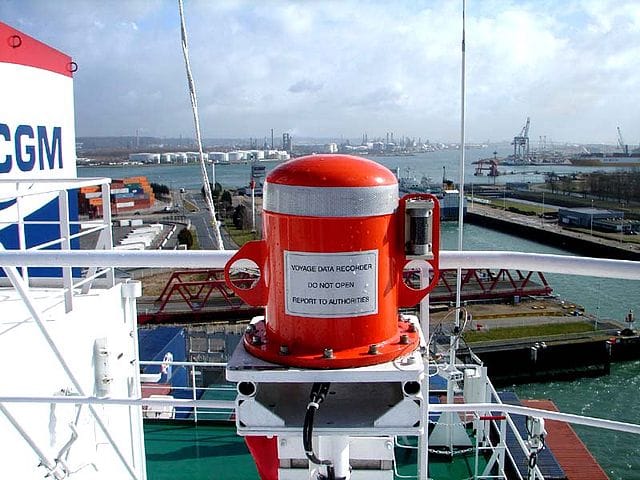
Events that VDR can be useful for
- In a situation where the recorded data might help explain or clarify the Master’s intention.
- Near accident at sea.
- When another vessel misconducts and a claim by either party can be expected.
- Near-misses and non-conformances with vessel’s Bridge procedures.
- Minor accidents at sea or in a harbor, such as touching a buoy or rough landing on a jetty.
- Misconduct on the vessel’s bridge or important information received via the vessel’s VHF.
- During difficult approaches to areas, the playback can be used for training.
- Random unannounced VDR drill from the office
What Data Does a VDR Record?
The VDR captures navigation and hull data as international standards require.
Here are the information that gets recorded:
- Date and time in UTC
- Ship’s position in latitude and longitude
- Speed through the water and over the ground
- Ship’s heading
- Bridge audio (via microphones)
- Communications audio
- Entire radar display
- Entire ECDIS display
- Echo sounder data
- Main alarms
- Rudder order and response
- Engine and thruster order and response
- Hull openings status*
- Watertight and fire door status*
- Accelerations and hull stresses*
- Wind speed and direction
- AIS Data
Data marked with an asterisk (*) only applies to ships fitted with such sensors.
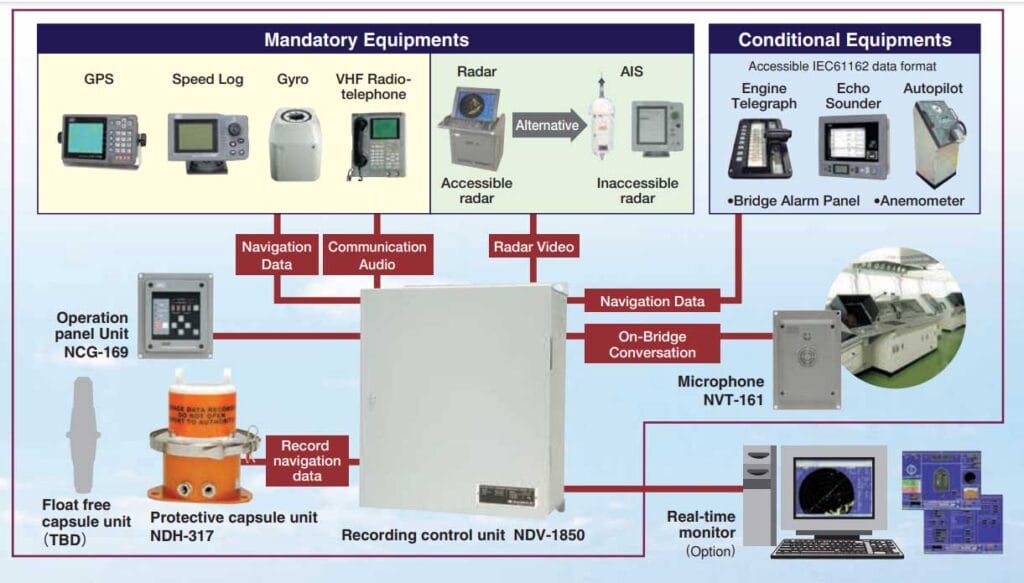
Difference Between S-VDR and VDR
The Simplified Voyage Data Recorder or S-VDR is a low-cost alternative and a simplified version of the VDR.
The difference between a Voyage Data Recorder (VDR) and a Simplified Voyage Data Recorder (S-VDR) lies mainly in the amount and type of data they record and the ships they are designed for.
Here’s a breakdown of their differences
Data recording requirements:
The VDR records a complete set of data from various sensors listed above.
The S-VDR only captures fewer types of data. It focuses on the core information necessary to reconstruct events, such as:
- Date and time in UTC
- Ship’s position in latitude and longitude
- Speed through the water and over the ground
- Ship’s heading
- Bridge audio (via microphones)
- Communications audio
- Entire radar display
Carriage requirements:
Voyage Data Recorder (VDR)
- Passenger ships constructed on or after 1 July 2002;
- Ro-ro passenger ships constructed before 1 July 2002, not later than the first survey on or after 1 July 2002;
- Passenger ships other than ro-ro passenger ships constructed before 1 July 2002 not later than 1 January 2004; and
- Other types of ships, except passenger ships, of 3,000 gross tonnage and upwards constructed on or after 1 July 2002.
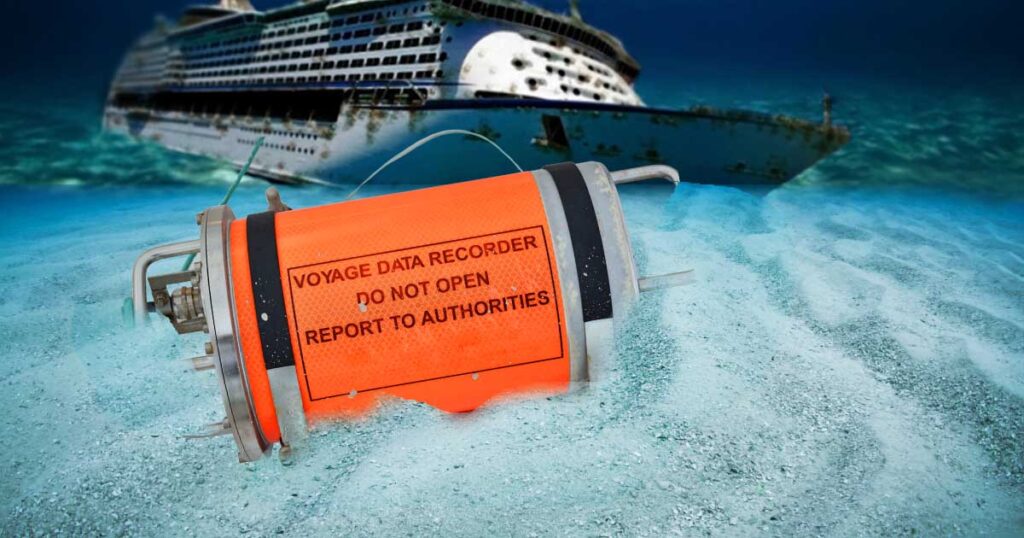
Simplified Voyage Data Recorder (S-VDR)
- Cargo ships of 20,000 gross tonnage and upwards constructed before 1 July 2002;
- Cargo ships of 3,000 gross tonnage and upwards but less than 20,000 gross tonnage constructed before 1 July 2002.
While the VDR is mandatory for large, modern vessels built after 2002, the Simplified Voyage Data Recorder (S-VDR) offers a more affordable solution for older ships.
Despite capturing fewer data points, S-VDR still ensures the preservation of critical information—like position, speed, and radar data.
For ships not designed with extensive digital infrastructure, the S-VDR provides a practical solution, meeting safety regulations without the complexity of a full VDR.
How to Use the Voyage Data Recorder
The VDR erases old data stored for a certain period and overwrites new data.
If a maritime accident occurs, simply press the “Save” button to preserve data in the VDR until the time of the accident.
Otherwise, the recorded details at the time of the accident will be erased automatically.
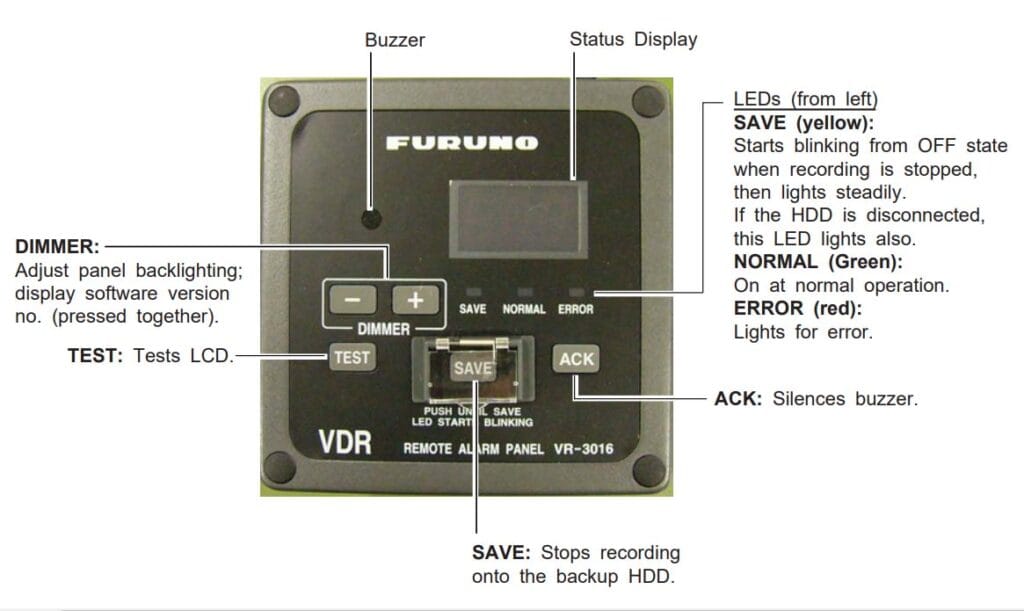
Depending on the recording medium, the saved data is stored for the following duration:
- Fixed protective capsule unit: 48 hours (2 days)
- Float-free capsule unit: 48 hours (2 days)
- Long-term recording medium: 720 hours (30 days)
Regulatory Requirement
VDRs and S-VDRs are specified under the following maritime regulations.
- Regulation 20 of SOLAS Chapter V
- Resolution MSC.333(90) or the Adoption of Revised Performance standards for shipborne Voyage Data Recorders
- Resolution MSC.163(78) or the Performance standards for shipborne Simplified Voyage Data Recorders (S-VDR)
May the winds be in your favor.
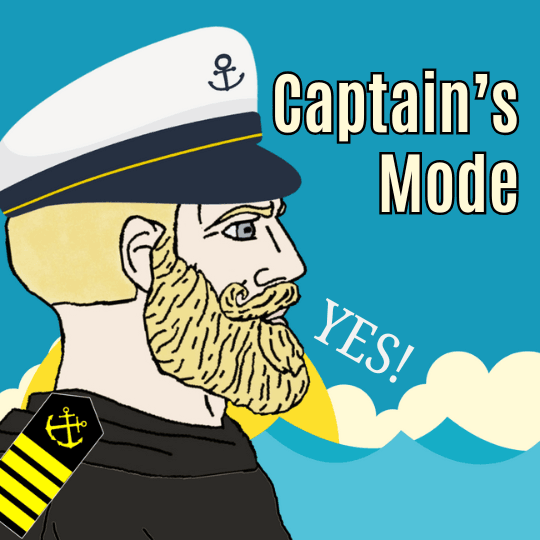
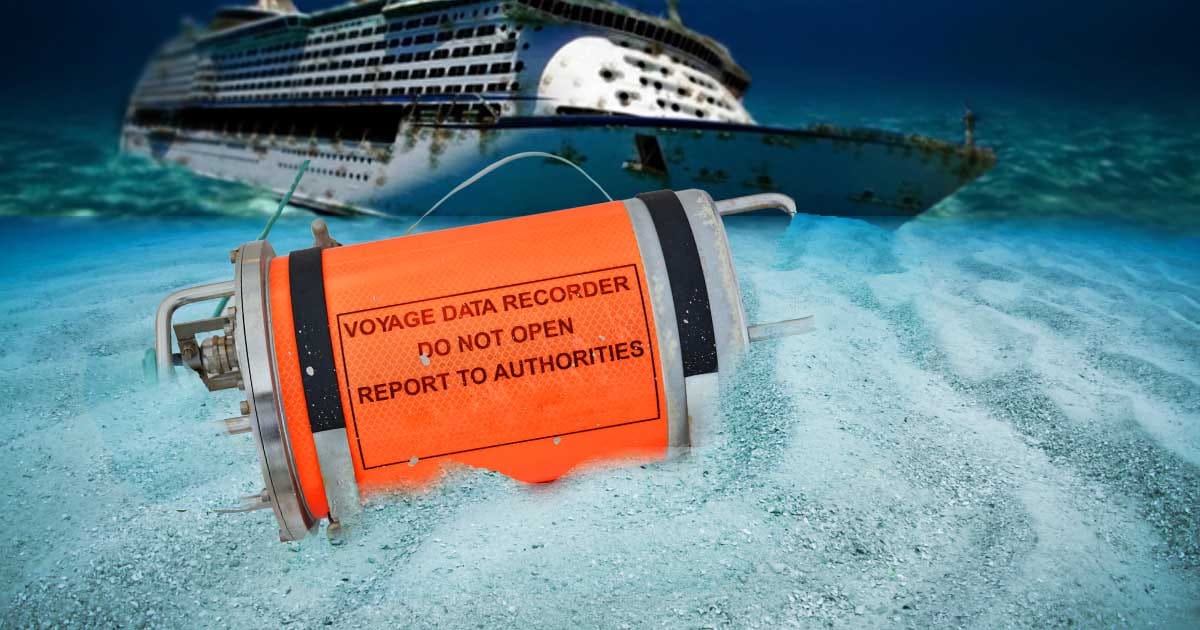
Leave a Reply